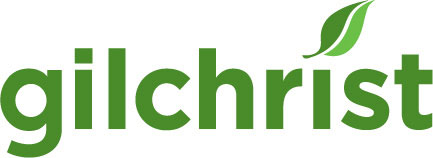Navigating Your Future: The Essential Guide to Advance Care Planning
Navigating Your Future: The Essential Guide to Advance Care Planning
Advance care planning is not just about making plans for the future; it’s about taking charge of your healthcare narrative today. Did you know that 80% of individuals express a desire to discuss their medical treatment preferences with their doctor when facing serious illness, yet only 7% report having had such a conversation? Or that while 90% acknowledge the importance of talking to loved ones about end-of-life care, only 27% have actually engaged in these crucial conversations? Or how about that 60% of people prioritize unburdening their family from making tough decisions, but a notable 56% have yet to communicate their end-of-life wishes? Gilchrist is here to navigate advance care planning together, ensuring that your wishes are honored every step of the way.
What is Advance Care Planning?
Advance care planning is a process that supports adults at any age or stage of health in understanding and sharing their personal values, life goals, and preferences regarding current and future medical care. The goal of advance care planning is to help ensure that people receive medical care that is consistent with their values, goals, and preferences during serious and chronic illness.
Cathy Pauley, Palliative Care Social Worker at Gilchrist, understands firsthand the importance of having these sometimes-difficult conversations. She has been specializing in palliative care for the last 11 years in the inpatient setting, in hospitals, on palliative care teams, and in the community. “We can’t plan for everything. But we can talk about what is most important — in our life, and in our health care — with those who matter most. The goal is really to be more proactive rather than reactive,” says Pauley.
The Process of Advance Care Planning
- Create a plan. What are your identified wishes, values, and goals? What do you not want/want regarding medical interventions? What matters most to you in life?
- Have Your Talk. Begin the conversation and discuss your plan with family members, friends, your primary medical provider, specialists (cardiologist, oncologist, Neurologist, etc.), and spiritual leaders.
- Document your conversation. Document your wishes and provide copies to those who need them.
What is an Advance Directive?
An advance directive is a legal document that conveys your wishes regarding your medical care, should you lose the ability (temporarily or permanently) to make decisions for yourself. This is different from a Financial Power of Attorney and your Last Will and Testament which is used to distribute your assets because it tells your healthcare team when the directive takes effect, who is appointed as the healthcare decision maker, and the scope of authority – firm instructions vs. flexibility. This document may contain:
- A Specified Healthcare Agent: Who you want to make decisions about your care if you are unable and guidance to that agent for future medical care.
- A Living Will: Instructions for the type of care you want to receive in certain hypothetical situations.
- After Death Wishes
What is a Verbal Advance Directive?
A verbal advance directive is an oral statement to a medical provider leaving instructions or appointing an agent. An oral advance directive must be made to a physician, physician assistant, or nurse practitioner, have a witness present, and be documented in the patient’s medical record, and signed and dated by the provider and the witness.
What is MOLST?
MOLST stands for Medical Orders for Life-Sustaining Treatment. These are medical orders completed by a physician or advance practitioner that follow the individual and are for your care now. These are important because they inform healthcare providers of your preferences for life-sustaining treatments such as CPR.
When Can People Change Their Mind?
An Advance Directive and MOLST can be changed/updated at any time. It is important for you to review yours at least once a year, or if there is a significant change in status of your condition or there is new information or treatments available.
Gilchrist is here to support patients and their family in advance care planning throughout the community. “It’s really all about identifying what a patient’s goals are, what’s most important to them, and then trying to align the care with the goals. We meet them where they are, provide them with the information that is appropriate to them, and are honest, open, and transparent,” Pauley concludes.
Resources for Advance Care Planning
www.gilchristcares.org/services/elder-medical-care/advance-care-planning/
https://www.marylandattorneygeneral.gov/Pages/HealthPolicy/Advanceirectives.aspx
https://app.smartsheet.com/b/publish?EQBCT=184ea510a456427fa6311a2997d6cd92
www.gbmc.org/advance-care-planning
www.theconversationproject.org
References
Sudore RL, Lum HD, You JJ, et al. Defining Advance Care Planning for Adults: A Consensus Definition from a Multidisciplinary Delphi Panel. Journal of pain and symptom management. 2017;53(5):821- 832.e1. doi:10.1016/j.jpainsymman.2016.12.331.
Grisso T., Appelbaum P. S., Mulvey E. P., & Fletcher K. (1995). The MacArthur treatment competence study. II: Measures of abilities related to competence to consent to treatment. Law and human behavior, 19 (2), 127–148.


